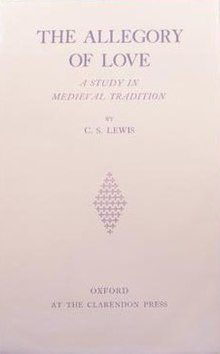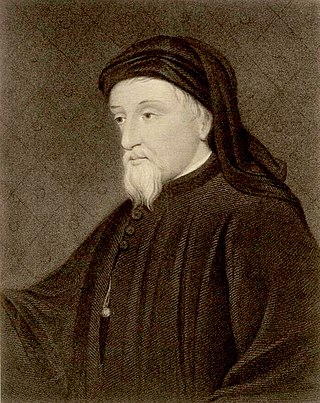
Geoffrey Chaucer was an English poet, author, and civil servant best known for The Canterbury Tales. He has been called the "father of English literature", or, alternatively, the "father of English poetry". He was the first writer to be buried in what has since come to be called Poets' Corner, in Westminster Abbey. Chaucer also gained fame as a philosopher and astronomer, composing the scientific A Treatise on the Astrolabe for his 10-year-old son Lewis. He maintained a career in the civil service as a bureaucrat, courtier, diplomat, and member of parliament.
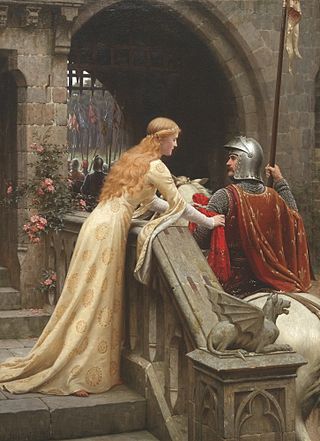
Courtly love was a medieval European literary conception of love that emphasized nobility and chivalry. Medieval literature is filled with examples of knights setting out on adventures and performing various deeds or services for ladies because of their "courtly love". This kind of love is originally a literary fiction created for the entertainment of the nobility, but as time passed, these ideas about love changed and attracted a larger audience. In the high Middle Ages, a "game of love" developed around these ideas as a set of social practices. "Loving nobly" was considered to be an enriching and improving practice.

John Gower was an English poet, a contemporary of William Langland and the Pearl Poet, and a personal friend of Geoffrey Chaucer. He is remembered primarily for three major works, the Mirour de l'Omme, Vox Clamantis, and Confessio Amantis, three long poems written in French, Latin, and English respectively, which are united by common moral and political themes.
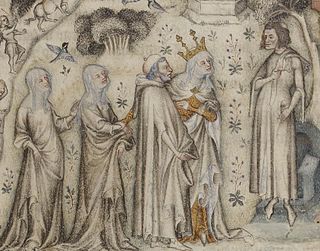
Guillaume de Machaut was a French composer and poet who was the central figure of the ars nova style in late medieval music. His dominance of the genre is such that modern musicologists use his death to separate the ars nova from the subsequent ars subtilior movement. Regarded as the most significant French composer and poet of the 14th century, he is often seen as the century's leading European composer.

Le Roman de la Rose is a medieval poem written in Old French and presented as an allegorical dream vision. As poetry, The Romance of the Rose is a notable instance of courtly literature, purporting to provide a "mirror of love" in which the whole art of romantic love is disclosed. Its two authors conceived it as a psychological allegory; throughout the Lover's quest, the word Rose is used both as the name of the titular lady and as an abstract symbol of female sexuality. The names of the other characters function both as personal names and as metonyms illustrating the different factors that lead to and constitute a love affair. Its long-lasting influence is evident in the number of surviving manuscripts of the work, in the many translations and imitations it inspired, and in the praise and controversy it inspired.

The Romaunt of the Rose is a partial translation into Middle English of the French allegorical poem, Le Roman de la Rose. Originally believed to be the work of Chaucer, the Romaunt inspired controversy among 19th-century scholars when parts of the text were found to differ in style from Chaucer's other works. Also the text was found to contain three distinct fragments of translation. Together, the fragments—A, B, and C—provide a translation of approximately one-third of Le Roman.

John Lydgate of Bury was an English monk and poet, born in Lidgate, near Haverhill, Suffolk, England.

Medieval literature is a broad subject, encompassing essentially all written works available in Europe and beyond during the Middle Ages. The literature of this time was composed of religious writings as well as secular works. Just as in modern literature, it is a complex and rich field of study, from the utterly sacred to the exuberantly profane, touching all points in-between. Works of literature are often grouped by place of origin, language, and genre.
According to the medieval poet Jean Bodel, the Matter of Rome is the literary cycle of Greek and Roman mythology, together with episodes from the history of classical antiquity, focusing on military heroes like Alexander the Great and Julius Caesar. Bodel’s division of literary cycles also included the Matter of France and the Matter of Britain. The Matter of Rome includes the Matter of Troy, consisting of romances and other texts based on the Trojan War and its legacy, including the adventures of Aeneas.

Troilus and Criseyde is an epic poem by Geoffrey Chaucer which re-tells in Middle English the tragic story of the lovers Troilus and Criseyde set against a backdrop of war during the siege of Troy. It was written in rime royale and probably completed during the mid-1380s. Many Chaucer scholars regard it as the poet's finest work. As a finished long poem it is more self-contained than the better known but ultimately unfinished The Canterbury Tales. This poem is often considered the source of the phrase: "all good things must come to an end" (3.615).

As a literary genre, the chivalric romance is a type of prose and verse narrative that was popular in the noble courts of High Medieval and Early Modern Europe. They were fantastic stories about marvel-filled adventures, often of a chivalric knight-errant portrayed as having heroic qualities, who goes on a quest. It developed further from the epics as time went on; in particular, "the emphasis on love and courtly manners distinguishes it from the chanson de geste and other kinds of epic, in which masculine military heroism predominates."
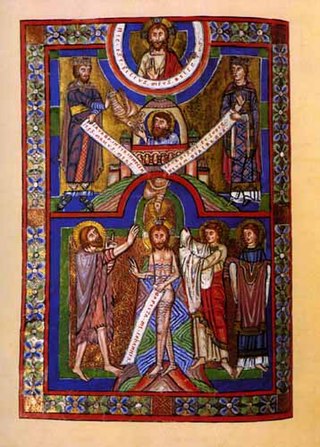
The four senses of Scripture is a four-level method of interpreting the Bible. This method originated in Judaism and was taken up in Christianity by the Church Fathers.
The term Middle English literature refers to the literature written in the form of the English language known as Middle English, from the late 12th century until the 1470s. During this time the Chancery Standard, a form of London-based English became widespread and the printing press regularized the language. Between the 1470s and the middle of the following century there was a transition to early Modern English. In literary terms, the characteristics of the literary works written did not change radically until the effects of the Renaissance and Reformed Christianity became more apparent in the reign of King Henry VIII. There are three main categories of Middle English literature, religious, courtly love, and Arthurian, though much of Geoffrey Chaucer's work stands outside these. Among the many religious works are those in the Katherine Group and the writings of Julian of Norwich and Richard Rolle.

Medieval French literature is, for the purpose of this article, Medieval literature written in Oïl languages during the period from the eleventh century to the end of the fifteenth century.
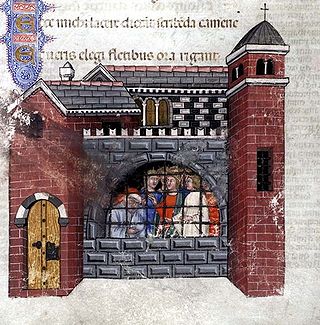
A dream vision or visio is a literary device in which a dream or vision is recounted as having revealed knowledge or a truth that is not available to the dreamer or visionary in a normal waking state. While dreams occur frequently throughout the history of literature, visionary literature as a genre began to flourish suddenly, and is especially characteristic in early medieval Europe. In both its ancient and medieval form, the dream vision is often felt to be of divine origin. The genre reemerged in the era of Romanticism, when dreams were regarded as creative gateways to imaginative possibilities beyond rational calculation.
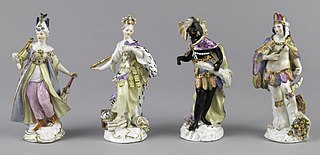
Personification is the representation of a thing or abstraction as a person. In the arts, many things are commonly personified. These include numerous types of places, especially cities, countries, and continents, elements of the natural world such as the months or four seasons, four elements, four cardinal winds, five senses, and abstractions such as virtues, especially the four cardinal virtues and seven deadly sins, the nine Muses, or death.

Confessio Amantis is a 33,000-line Middle English poem by John Gower, which uses the confession made by an ageing lover to the chaplain of Venus as a frame story for a collection of shorter narrative poems. According to its prologue, it was composed at the request of Richard II. It stands with the works of Chaucer, Langland, and the Pearl poet as one of the great works of late 14th-century English literature. The Index of Middle English Verse shows that in the era before the printing press it was one of the most-often copied manuscripts along with Canterbury Tales and Piers Plowman.
Chaucer's influence on 15th-century Scottish literature began towards the beginning of the century with King James I of Scotland. This first phase of Scottish "Chaucerianism" was followed by a second phase, comprising the works of Robert Henryson, William Dunbar, and Gavin Douglas. At this point, England has recognised Scotland as an independent state following the end of the Wars of Scottish Independence in 1357. Because of Scottish history and the English’s recent involvement in that history, all of these writers are familiar with the works of Geoffrey Chaucer.
Durant Waite Robertson Jr. was a scholar of medieval English literature and especially Geoffrey Chaucer. He taught at Princeton University from 1946 until his retirement in 1980 as the Murray Professor of English, and was "widely regarded as this [the twentieth] century's most influential Chaucer scholar".
The Floure and the Leafe is an anonymous Middle English allegorical poem in 595 lines of rhyme royal, written around 1470. During the 17th, 18th, and most of the 19th century it was mistakenly believed to be the work of Geoffrey Chaucer, and was generally considered to be one of his finest poems. The name of the author is not known but the poem presents itself as the work of a woman, and some critics are inclined to take this at face value. The poet was certainly well-read, there being a number of echoes of earlier writers in the poem, including Geoffrey Chaucer, John Lydgate, John Gower, Andreas Capellanus, Guillaume de Lorris, Guillaume de Machaut, Jean Froissart, Eustache Deschamps, Christine de Pizan, and the authors of the "Lai du Trot" and the Kingis Quair.
